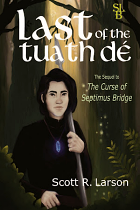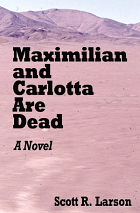Personality of cult
Now, here’s a column I actually started writing last May. I started it after seeing a copy of Entertainment Weekly, which had a cover story called “The Top 50 Cult Movies.” I thought that this definitely needed some commentary, but before I could finish the column, important movie people started dying left and right (Gregory Peck, Hume Cronyn, Katharine Hepburn, et al.). I barely had time between personal tributes to record my personal observations of the Galway Film Fleadh and, later on, the Cork Film Festival. Of course, somewhere along the way, my computer crashed and I lost what I had written anyway.
So, here I am now, with my timely response to the May 23 cover story of Entertainment Weekly. “Cult movie” is a term that has really become seriously over-used. I myself have resorted to it way to often. So much so that at some point I made a conscious decision to avoid it because I found myself describing almost any movie that was not a mainstream Hollywood blockbuster as a “cult movie.” That, of course, describes potentially so many films as to make the term nearly meaningless. So, what definition did EW use? Their article didn’t actually bother to define “cult movie” directly, although it does so by implication thusly: “Most died at the box office, some of them horribly. Mangled and despised, they were re-animated on video.” In other words a cult film is one which failed commercially as a theatrical release but found new life a video rental or purchase. But lest anyone think that this definition necessarily encompasses the odd tasteful prestige movie that was under-marketed or, say, all films not made in the United States, EW clarifies by noting that cult movies feature “a subliminal vocabulary of vaguely subversive images, ideas, and phrases…”
Personally, my working definition of “cult movie” has always been slightly different than that. I have always thought of cult films as movies that have not been seen by most of the movie-going public and which have a relatively small fanatical base of admirers who watch the film over and over. This stems from the word “cult,” which is defined by the Oxford Paperback Dictionary this way: “noun 1) religious system, sect, etc. 2) devotion or homage to person or thing. 3) popular fashion. 4) followers of fashion, religious sect, etc.” I had always focused on the homage thing, that the movie must be some sort of object of fascination for a group of adherents. By this definition, there is one quintessential cult movie of all time, and that is of course The Rocky Horror Picture Show. It is the only movie I know of where devotees come to watch as often as every week and wear costumes and recite lines and perform rituals (throwing toast at the screen, etc.) not entirely unlike, say, a Catholic mass. Certain fantasy and science fiction movies have legions of devotees who also dress in costume (Star Trek, Star Wars, etc.), but these movies have too much marketing and merchandising behind them (not to mention box office receipts) to be considered genuinely cult.
Interestingly, Rocky Horror is merely No. 2 on EW’s top 50 list. Top of the list is Rob Reiner’s 1984 mockumentary This Is Spinal Tap. This satisfies EW’s requirement that the movie be more successful commercially on video than on the big screen. It also satisfies its other (implied) requirement that the film have contributed major catch phrases to the popular culture. As EW’s write-up notes, the phrase “mine goes up to eleven” has been recognized in The Oxford English Dictionary no less. Rounding out EW’s top ten are Tod Browning’s Freaks, Hal Ashby’s Harold and Maude, John Waters’s Pink Flamingos, Tobe Hooper’s The Texas Chainsaw Massacre, Alex Cox’s Repo Man, Brian De Palma’s Scarface, Ridley Scott’s Blade Runner and Frank Darabont’s The Shawshank Redemption.
The Shawshank Redemption? I know that it was under-appreciated at box office when it was released in 1994, but it got seven Oscar nominations, for goodness sake. It starred Tim Robbins and Morgan Freeman, who were well-established stars. It was based on a story by Stephen King. This was nothing if not a mainstream movie. This is a movie that falls in a category that, for want of a catchier term, I call Movies That Found Renewed Life Thanks to Home Video. Many of EW’s other picks are what I tend to call “midnight movies,” i.e. movies that are most often (if ever) screened at or around midnight, usually as part of a weekend program at a repertory cinema or at a film festival. This is because the sorts of people who like to watch these movies only get going around the time the sun goes down. These are movies that are designed to shock, usually via violence, sometimes via sex, sometimes just in their own innate awfulness. What they all share is a quality that can best be summed up as “non-commercial.” Cult movies are sometimes midnight movies, and midnight movies are sometimes cult movies, but the two are definitely not synonymous. These two categories also overlap with another category that I like to call Cinema Obscuro. I didn’t think this term up myself. I got it from a (rare) email message that praised my web site. I immediately understood what the writer meant. It’s a perfect synonym for non-mainstream movies, i.e. low-budget independent films and non-American films, which most audiences tend to miss because they do not come to the suburban multiplexes across America. More specifically, it refers to films that never got a distribution deal and so can be seen only at film festivals, film societies and maybe the odd repertory cinema program. These are the kinds of films that people email me about, saying “I did an internet search on such-and-such movie and your web page was one of two that showed up.” These include movies like Colin Fitz, Moebius and Things I Never Told You.
That brings up a key quality of cult movies, at least in my idea of them: to truly be cult, they shouldn’t be that easy to see. Since they are not mainstream, they have to be sought out. As the EW article unwittingly makes clear, thanks to the home video industry every movie ever made now has a potentially worldwide audience. Instead of cinematic choice being winnowed by a finite number of cinema screens, most movies can be screened in one’s home after a visit to the local video store or metropolitan video store or Amazon.com. The idea of cult movies has been diluted because it is so easy to see, indeed own, any movie you want. (Of course, not every movie is available on video, but since that fact doesn’t fit in with my thesis, we’ll disregard it.)
Perhaps the only true cult film on EW’s list then is No. 45. That would be Todd Haynes’s Superstar: The Karen Carpenter Story, which tells the story of the late pop songstress, using Barbie-like dolls as actors, and which was suppressed for legal reasons. The vast majority of people have not seen this film because there is no legal way to see it. Of course, that will be an obstacle to fewer and fewer people as more of them get broadband internet.
Happy Halloween!
-S.L., 30 October 2003
If you would like to respond to this commentary or to anything else on this web site, please send a message to feedback@scottsmovies.com. Messages sent to this address will be considered for publishing on the Feedback Page without attribution. (That means your name, email address or anything else that might identify you won’t be included.) Messages published will be at my discretion and subject to editing. But I promise not to leave something out just because it’s unflattering.
If you would like to send me a message but not have it considered for publishing, you can send it to scott@scottsmovies.com.





















